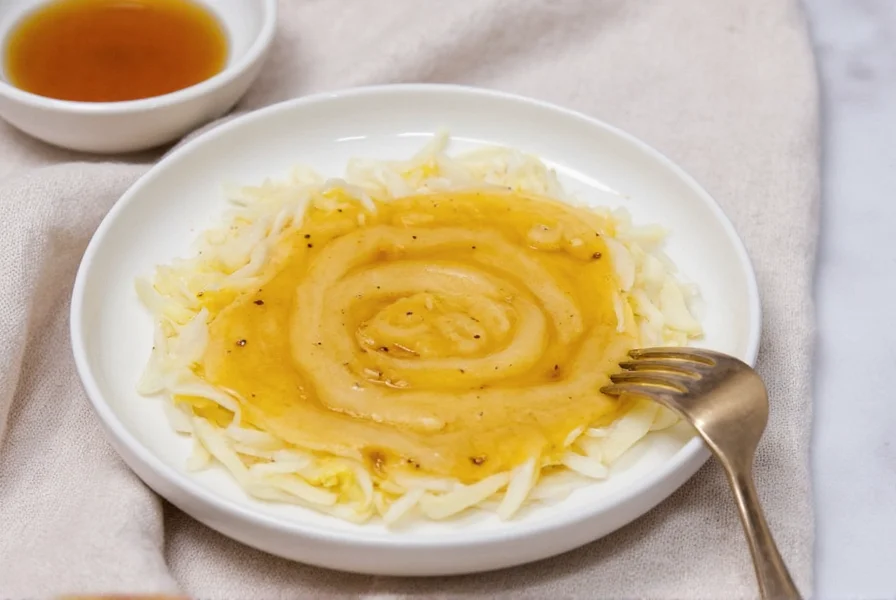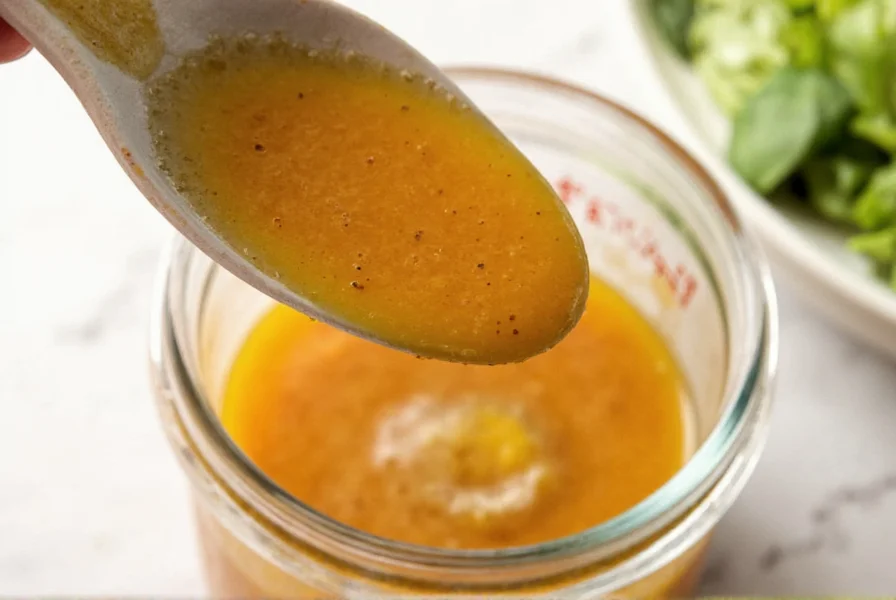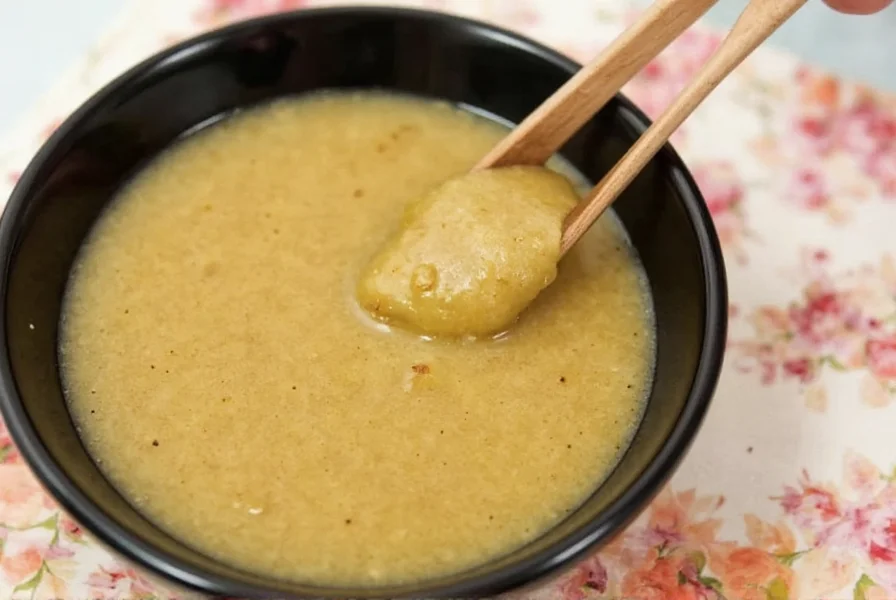Japanese ginger dressing stands apart from Western interpretations with its delicate balance of fresh ingredients and subtle sweetness. Unlike heavier American-style ginger dressings that often rely on mayonnaise or oil bases, traditional Japanese versions showcase the bright, clean flavors that complement rather than overwhelm delicate ingredients like sashimi, cucumber, and leafy greens.
Essential Components of Authentic Japanese Ginger Dressing
The magic of genuine Japanese ginger dressing lies in its simplicity and quality of ingredients. Each component serves a specific purpose in creating the dressing's signature flavor profile:
| Ingredient | Traditional Role | Authentic Measurement Ratio |
|---|---|---|
| Fresh ginger (grated) | Provides bright, spicy notes | 2 parts |
| Rice vinegar | Creates gentle acidity | 3 parts |
| Usukuchi soy sauce | Offers umami without darkening color | 1.5 parts |
| Mirin | Provides subtle sweetness | 1 part |
| Toasted sesame oil | Enhances aroma (used sparingly) | 0.5 part |
Professional chefs emphasize using freshly grated ginger rather than pre-made ginger paste for superior flavor. The ginger's fibrous texture actually helps emulsify the dressing naturally. Quality rice vinegar makes a significant difference—look for unpasteurized varieties that retain more complex flavors.
Traditional Preparation Method
Creating authentic Japanese ginger dressing requires attention to technique as much as ingredients. The traditional preparation follows these steps:
- Peel and finely grate fresh ginger using a ceramic or metal oroshigane (Japanese grater)
- Squeeze ginger pulp through cheesecloth to extract maximum juice while removing fibers
- Combine ginger juice with rice vinegar, usukuchi soy sauce, and mirin in a glass bowl
- Whisk gently until fully incorporated (no vigorous shaking which introduces air bubbles)
- Add sesame oil last, incorporating with minimal agitation
- Refrigerate for 2 hours before serving to allow flavors to meld

Japanese Ginger Dressing vs. Western Adaptations
Many Western "Japanese" ginger dressings deviate significantly from authentic versions. Understanding these differences helps recreate the genuine article:
- Base ingredients: Authentic versions use vinegar as the primary liquid, while Western adaptations often add oil or mayonnaise
- Ginger preparation: Traditional recipes use freshly grated ginger juice, whereas commercial versions frequently use ginger powder
- Sweetness level: Authentic dressings have subtle sweetness (1:3 sugar-to-vinegar ratio), while Western versions tend to be much sweeter
- Texture: Proper Japanese ginger dressing is thin and pourable, not thickened with starches or emulsifiers
- Serving temperature: Authentic versions are always served chilled, never at room temperature
Perfect Pairings for Japanese Ginger Dressing
This versatile dressing enhances specific Japanese dishes when used appropriately:
- Hiyayakko (chilled tofu): Drizzle over silken tofu with bonito flakes
- Sunomono (vinegared salads): Toss with cucumber, wakame, and shrimp
- Grilled fish: Serve alongside white fish like tai (sea bream) or ayu (sweetfish)
- Vegetable tempura: Use as a light dipping sauce instead of tentsuyu
- Soba noodle salads: Toss chilled buckwheat noodles with vegetables and dressing
Storage Guidelines for Homemade Dressing
Unlike commercial dressings containing preservatives, authentic Japanese ginger dressing has a limited shelf life. Follow these storage recommendations:
- Store in airtight glass container in refrigerator
- Consume within 3-4 days for optimal flavor and food safety
- Separation is normal—gently shake before use (avoid vigorous shaking)
- Do not freeze, as this alters the delicate flavor balance
- Discard if aroma becomes overly sour or pungent
Common Variations Across Japanese Regions
Regional differences in Japanese ginger dressing reflect local ingredients and preferences:
- Kyoto style: Uses mellow Kyoto vinegar and adds a touch of yuzu zest
- Okinawan version: Incorporates brown sugar and habanero for subtle heat
- Hokkaido adaptation: Includes a small amount of local honey for sweetness
- Restaurant-style: Professional kitchens often add a pinch of MSG for enhanced umami

Troubleshooting Common Issues
Even experienced cooks encounter challenges with Japanese ginger dressing. Here's how to address frequent problems:
- Too spicy: Balance with additional mirin or a pinch of sugar—never water which dilutes flavor
- Too strong vinegar taste: Add small increments of soy sauce rather than more sweetener
- Separation issues: Use a squeeze bottle and shake gently before each use
- Bitter aftertaste: Indicates overuse of ginger fibers—always strain grated ginger
- Color darkening: Caused by using koikuchi instead of usukuchi soy sauce
Creating Restaurant-Quality Dressing at Home
Professional results require attention to detail. These tips help achieve authentic restaurant-quality Japanese ginger dressing:
- Use young spring ginger for milder flavor and less fibrous texture
- Mix ingredients in glass or ceramic—never metal which affects flavor
- Chill all ingredients before combining for brighter flavor profile
- Adjust sweetness gradually—authentic versions should never taste overtly sweet
- Let dressing rest minimum 2 hours before serving to allow flavors to harmonize
Frequently Asked Questions
What's the difference between Japanese ginger dressing and regular ginger dressing?
Authentic Japanese ginger dressing uses rice vinegar as the primary base with minimal oil, while Western versions often contain mayonnaise or significant oil content. Japanese versions emphasize fresh grated ginger juice rather than powder, have a more delicate sweet-sour balance, and maintain a thin, pourable consistency without emulsifiers.
Can I substitute regular soy sauce for usukuchi in Japanese ginger dressing?
While possible, regular soy sauce (koikuchi) will darken the dressing's color and create a stronger, saltier flavor that overwhelms the delicate ginger notes. Usukuchi soy sauce has higher salt content but lighter color and more nuanced flavor that preserves the dressing's intended appearance and balance. If substituting, use 25% less regular soy sauce and add a pinch of sugar to compensate.
Why does my homemade Japanese ginger dressing separate quickly?
Authentic Japanese ginger dressing intentionally avoids emulsifiers and significant oil content, which causes natural separation. This indicates you've made a traditional version. Simply shake gently in a sealed container before use. Commercial dressings that don't separate typically contain stabilizers or excessive oil that compromise authentic flavor and texture.
How can I make Japanese ginger dressing less spicy without losing flavor?
Rather than reducing ginger (which diminishes essential flavor), balance spiciness by increasing mirin proportionally. For every tablespoon of additional mirin, add 1/2 teaspoon rice vinegar to maintain acidity balance. Alternatively, strain the grated ginger more thoroughly to remove fibrous particles that contribute excessive heat while preserving ginger juice flavor.











 浙公网安备
33010002000092号
浙公网安备
33010002000092号 浙B2-20120091-4
浙B2-20120091-4